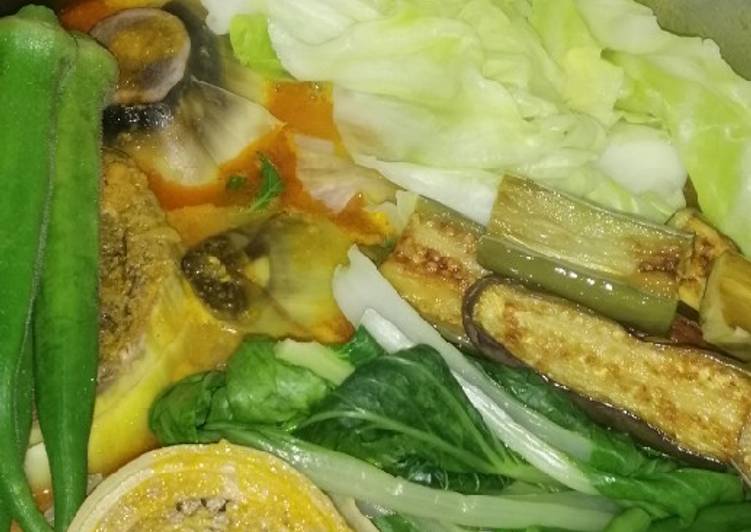Pork kare-kare. Tips on How to Cook Pork Kare Kare. The color of Kare-kare usually comes out orangey when done. An ingredient known as atsuete is attributed in providing color to the dish.
 It is delicious, tasty, and best eaten with bagoong.
A meat and vegetable stew in peanut sauce, kare-kare is a Filipino dish cooked with various beef offal.
Tripe, tail, leg and face are popular choices.
You can have Pork kare-kare using 12 ingredients and 5 steps. Here is how you cook it.
It is delicious, tasty, and best eaten with bagoong.
A meat and vegetable stew in peanut sauce, kare-kare is a Filipino dish cooked with various beef offal.
Tripe, tail, leg and face are popular choices.
You can have Pork kare-kare using 12 ingredients and 5 steps. Here is how you cook it.
Ingredients of Pork kare-kare
- Prepare 1 of whole banana blossom.
- It's 10 pcs of string beans.
- Prepare 2 pcs of eggplant.
- You need 1/2 of kilo cabbage.
- Prepare 1 bundle of pechay.
- Prepare 1 kg of pork.
- Prepare 1 pc of onion.
- It's 5 cloves of garlic.
- Prepare 1 tbsp of rice flour (pan fried).
- You need 1 tbsp of annato seeds (or you may use powder).
- You need to taste of Salt and pepper.
- You need 1/2 cup of peanut butter.
Simple Kare-kare recipe you can prepare for everyday lutong bahay. This Kare-kare recipe is very simple and easy to do. Yay! 🙂 Kare-kare is an ox tail stew with peanut butter to add richness and flavor to the sauce. It's a popular Filipino specialty dish from Pampanga, you see this in menus of Filipino restaurants served in.
Pork kare-kare instructions
- Bring pork to boil. Set aside meat from stock when the pork is tender enough..
- In a pot, medium heat oil and put annato seeds and remove once color is achieved. Saute garlic, onion and pork meat for 3 mins. Or once the annato oil covered the meat. Add salt and pepper.
- Put in the pork stock in the pot then add the peanut butter. Boil for 10 mins. In a seperate pot blanch all vegetable ingredients..
- Make a slurry from rice flour and water. Add to pot and let boil for 5 more mins..
- Put in vegetable to pot. Serve with bagoong. Enjoy!.
To make the kare-kare sauce; in a sauce pan, heat oil and saute garlic. Put the water, peanut butter, rice flour, patis, pepper and. Kare-kare is one my favorite Filipino dishes. Origin of this dish is a bit vague, most believe that it originated from Pampanga, known as the culinary center of the Philippines (which just happens to be. It's a classic stew from the Philippines.